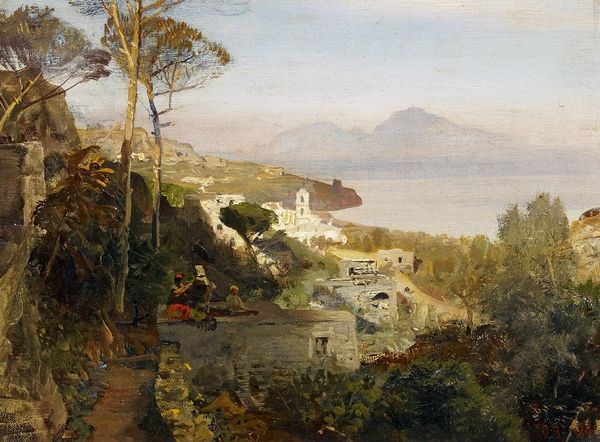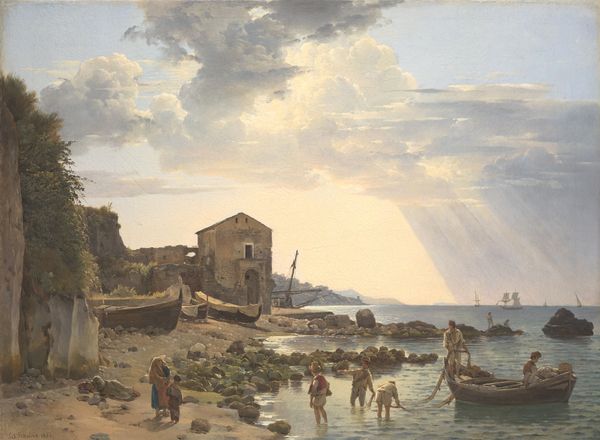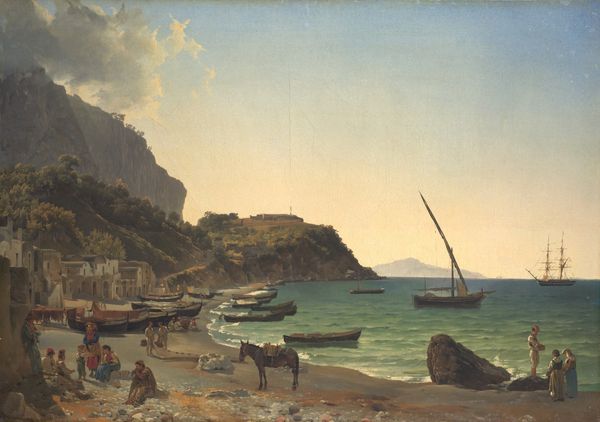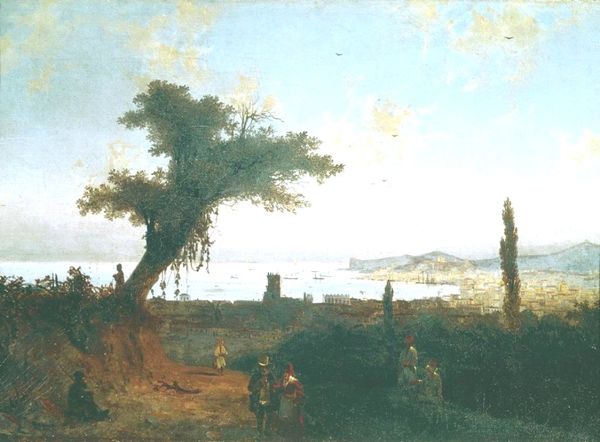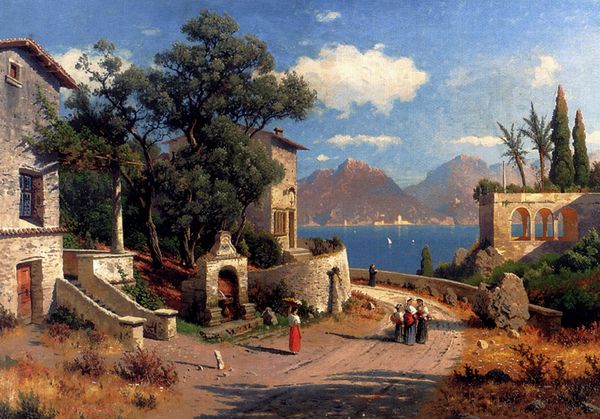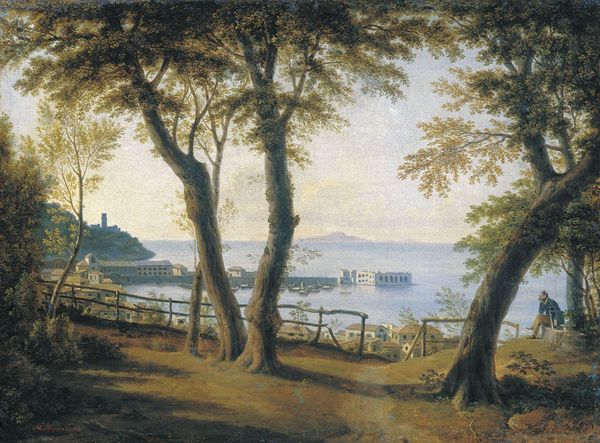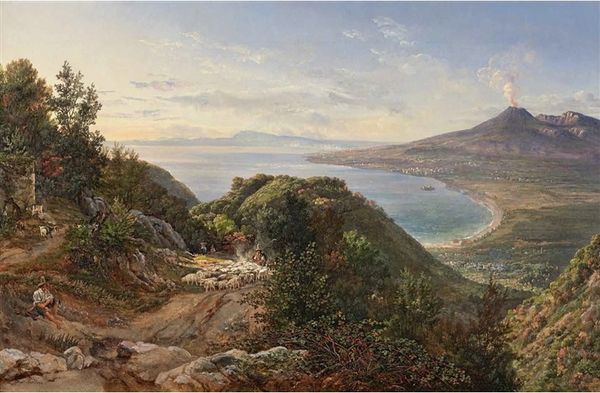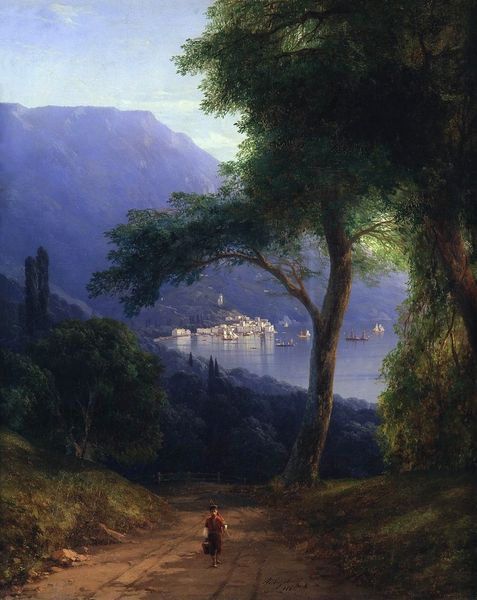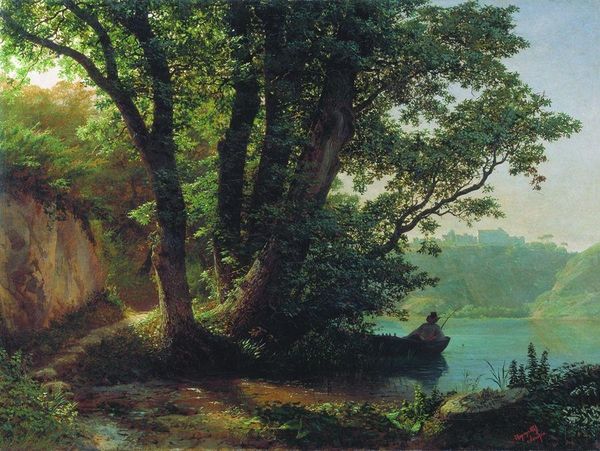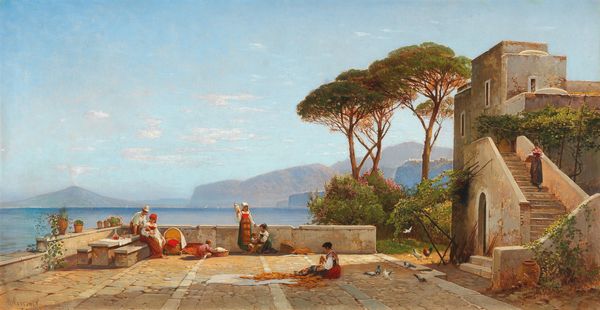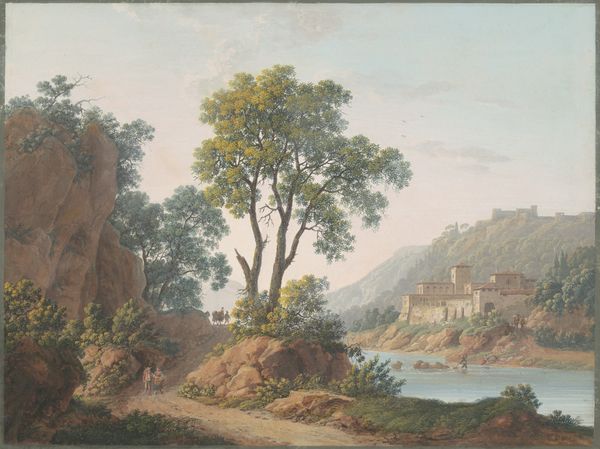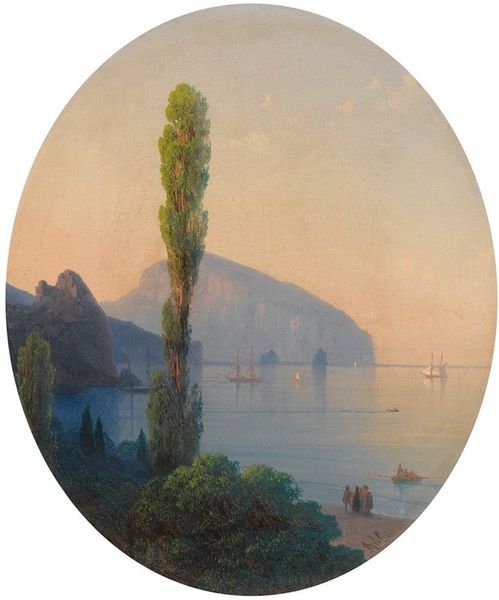
Terrace Of The Capuchin Monastery In Sorrento 1824
0:00
0:00
heinrichreinhold
Neue Pinakothek, Munich, Germany
#
excavation photography
#
surveyor photography
#
abandoned
#
drone photography
#
impressionist landscape
#
derelict
#
landscape photography
#
naturalistic tone
#
nature heavy
#
coastline landscape
Dimensions: 41.7 x 54.8 cm
Copyright: Public domain
Curator: Heinrich Reinhold's "Terrace of the Capuchin Monastery in Sorrento," painted in 1824, captures a tranquil scene overlooking the sea. It's held at the Neue Pinakothek in Munich. Editor: It gives off an aura of profound peace, but there’s a melancholy to it, too. The muted colors contribute to that subdued atmosphere, like a memory fading. Curator: It's interesting that you pick up on the feeling of a fading memory. Consider the historical context: Romanticism was at its height. The focus was shifting toward idealized landscapes reflecting inner emotional states, but who had access to such ideals? For whom was this pastoral calm achievable? Editor: I see two figures in what appear to be monastic robes. That suggests the religious orders and their relationship to land ownership and stewardship. The symbolic resonance of monastic life — withdrawal, contemplation, but also potential for power – it's quite strong here. Curator: Exactly! The choice of subject implicates issues of class and social structure, while the serenity of the scene glosses over the socio-political turmoil that was part of everyday life for those not in a position of power at the time. Even the viewpoint – are we invited in, or are we kept at a distance? Editor: Those old stone walls feel imposing despite the inviting vista. I wonder, does the way Reinhold positions them symbolize protection, exclusion, or even both? It's an image laden with symbols; the sea, the heights, even the trees feel like coded elements of something larger. Curator: The painting offers an idyllic vision, sure, but it obscures so much more. Romanticism wasn’t some universal truth. It was an ideal experienced differently—or not at all—depending on gender, race, and social standing. Editor: Reinhold provides an external view of quiet beauty, and we provide what? Interiority. By understanding what we bring to this image and the visual language it deploys, we perhaps get closer to some layered truths about history and ourselves. Curator: Yes. Perhaps this artwork prompts us to re-examine history's complexities with a critical and compassionate lens, dismantling any sense of neutrality or universality, particularly where nature is concerned.
Comments
No comments
Be the first to comment and join the conversation on the ultimate creative platform.
